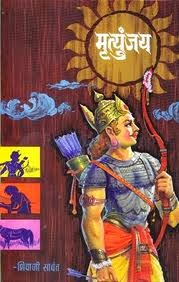Bhumika: The Role
The 1977 Hindi film "Bhumika: The Role" is the journey of an actress named Usha/Urvashi (Smita Patil) which goes back and forth in time tracing her journey from childhood till she is in her late 40s. The film derives its inspiration from an actress called Hansa Wadkar from the 1940s. The English playwright Shakespeare famously remarked: "All the world's a stage and we are all mere players." Filmmaker Shyam Benegal was one of the few who understood correctly what Shakespeare said in entirety.
The film has a perfect title which documents the life of a film actor consumed by frustration. The film opens with a lavani dance sequence being choreographed and shot in a film studio. The film keeps alternating between the past and the present using black-and-white for the past and colour for the present. The past speaks on how the young Usha's childhood job was to learn singing from her grandmother, who was a famous singer in her times and to run between her alcoholic father. The past also speaks of how she entered the film industry following her father's demise and how the sycophant Keshav (Amol Palekar) brings Usha and her mother to Bombay and Usha beginning her journey as an actress.
To showcase the life of Usha as an actress, the filmmaker Shyam Benegal takes us to the sets of a mythological movie, period pieces, songs set among flowers, art films and adventure films. However, the real struggle for Usha begins when she gets married to the much-older sycophant Keshav who keeps reminding her of a childhood promise and how much he has done for her family in order to prevent them from falling to despair. There begins the actual struggle of a woman. I would personally like to view this movie as an essay of a woman who has been in pursuit of harmony in almost all roles she dons in her lifetime. Bhumika is an attempt to understand Usha's efforts as an actress and more importantly as a woman.
The screenplay and the crisp dialogues are brilliantly written by the late. theatre guru Satyadev Dubey. The use of background music efficiently, the use of folk drum beats to indicate the lavani dance sequence and the sound of news relayed by the All India Radio indicating a probable time frame proves that detailing has been cautiously worked since it traverses the period between the 1930s to the 1950s. No scene is irrelevant despite the film going back and forth in time.
Naseeruddin Shah as the rationalist film producer Sunil Verma speaks some of the best lines in the film like "Apne desh mein dimaag se koi nahi sochta. Dil se sochte hain sab." (In our country, no one thinks rationally. Everyone thinks emotionally). It is amazing to believe that the young age of 22, Smita Patil could play the remarkable role of an upright woman who believes in herself and also don the role of a frustrated 40 something film actress with the ultimate realization that she is the only person with whom she has to battle her loneliness.
The film has a perfect title which documents the life of a film actor consumed by frustration. The film opens with a lavani dance sequence being choreographed and shot in a film studio. The film keeps alternating between the past and the present using black-and-white for the past and colour for the present. The past speaks on how the young Usha's childhood job was to learn singing from her grandmother, who was a famous singer in her times and to run between her alcoholic father. The past also speaks of how she entered the film industry following her father's demise and how the sycophant Keshav (Amol Palekar) brings Usha and her mother to Bombay and Usha beginning her journey as an actress.
To showcase the life of Usha as an actress, the filmmaker Shyam Benegal takes us to the sets of a mythological movie, period pieces, songs set among flowers, art films and adventure films. However, the real struggle for Usha begins when she gets married to the much-older sycophant Keshav who keeps reminding her of a childhood promise and how much he has done for her family in order to prevent them from falling to despair. There begins the actual struggle of a woman. I would personally like to view this movie as an essay of a woman who has been in pursuit of harmony in almost all roles she dons in her lifetime. Bhumika is an attempt to understand Usha's efforts as an actress and more importantly as a woman.
The screenplay and the crisp dialogues are brilliantly written by the late. theatre guru Satyadev Dubey. The use of background music efficiently, the use of folk drum beats to indicate the lavani dance sequence and the sound of news relayed by the All India Radio indicating a probable time frame proves that detailing has been cautiously worked since it traverses the period between the 1930s to the 1950s. No scene is irrelevant despite the film going back and forth in time.
Naseeruddin Shah as the rationalist film producer Sunil Verma speaks some of the best lines in the film like "Apne desh mein dimaag se koi nahi sochta. Dil se sochte hain sab." (In our country, no one thinks rationally. Everyone thinks emotionally). It is amazing to believe that the young age of 22, Smita Patil could play the remarkable role of an upright woman who believes in herself and also don the role of a frustrated 40 something film actress with the ultimate realization that she is the only person with whom she has to battle her loneliness.


Comments